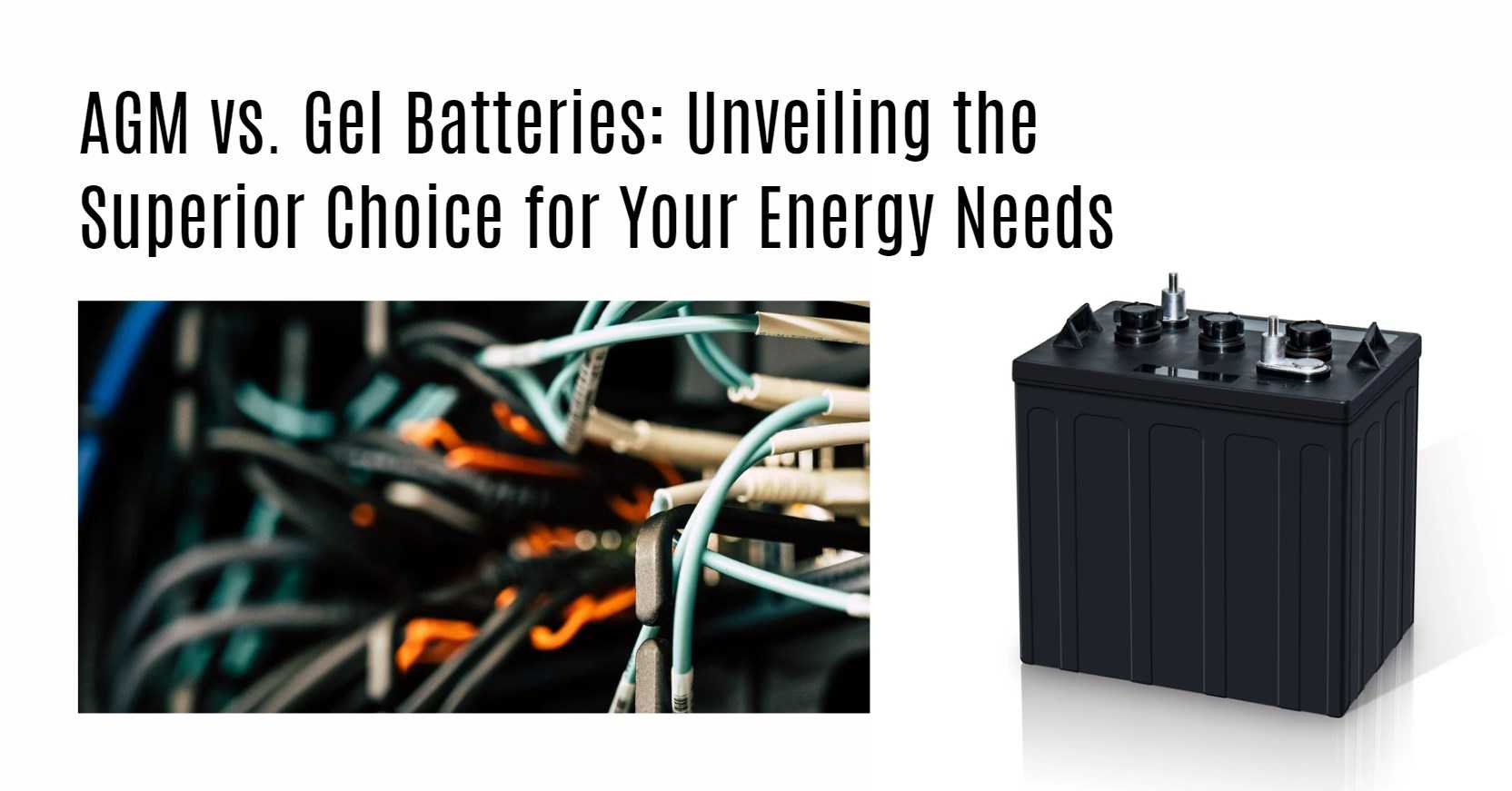When selecting a battery for various applications, the choice often comes down to Absorbent Glass Mat (AGM) and Gel batteries. These two types of batteries share some common features, such as being nonspillable and offering deep cycles. However, their differences are significant enough to influence your decision. This guide will delve into the distinct characteristics, advantages, and applications of AGM and Gel batteries, providing you with the necessary information to make an informed choice.
Understanding AGM Batteries
What Are AGM Batteries?
AGM batteries are a type of lead-acid battery where the electrolyte is absorbed into a fiberglass mat. This design makes AGM batteries spill-proof and capable of being mounted in various positions. The technology behind AGM batteries allows for high performance in demanding conditions, making them a preferred choice in numerous applications.
Key Features of AGM Batteries
- High Amp Compatibility: AGM batteries excel in high amperage situations, making them suitable for vehicles, marine use, and other high-demand environments.
- Low Self-Discharge Rate: These batteries maintain their charge for extended periods, reducing the need for frequent recharging.
- Vibration Resistance: The construction of AGM batteries ensures durability and resistance to vibrations, which is essential for automotive and off-road use.
- Temperature Range: AGM batteries operate efficiently across a wide range of temperatures, from extreme cold to high heat.
- Fast Recharge: AGM batteries can recharge quickly, providing convenience and efficiency for users who require rapid turnaround times.
Advantages of AGM Batteries
- Cost-Effectiveness: AGM batteries are generally less expensive than Gel batteries, offering a more budget-friendly option without compromising on performance.
- Maintenance-Free: With no need for regular maintenance, AGM batteries provide hassle-free operation.
- Longer Lifespan: The robust design and efficient charging cycles contribute to a longer operational life.
Understanding Gel Batteries
What Are Gel Batteries?
Gel batteries, another type of lead-acid battery, use a gelified electrolyte. The silica-based gel immobilizes the electrolyte, making the battery spill-proof and maintenance-free. However, Gel batteries have specific characteristics that set them apart from AGM batteries.
Key Features of Gel Batteries
- Spill-Proof Design: Like AGM batteries, Gel batteries are nonspillable and can be mounted in various orientations.
- Deep Discharge Recovery: Gel batteries can recover from deep discharges, making them suitable for applications where the battery is frequently drained.
- Low Self-Discharge Rate: Gel batteries also hold their charge well over time, reducing the need for constant recharging.
Disadvantages of Gel Batteries
- Delicate Charging Requirements: Gel batteries are sensitive to overcharging and require precise charging controls. Overcharging can damage the battery, reducing its lifespan significantly.
- Higher Cost: Gel batteries tend to be more expensive than AGM batteries, which can be a deciding factor for cost-conscious buyers.
- Lower High-Amp Performance: Gel batteries are not as well-suited for high amperage applications, making them less versatile than AGM batteries.
Comparative Analysis: AGM vs Gel Batteries
Performance in High-Amperage Applications
AGM batteries outperform Gel batteries in high-amperage scenarios. The ability to handle quick charging and high discharge rates makes AGM batteries ideal for automotive, marine, and other high-demand uses. In contrast, Gel batteries are more prone to damage under such conditions due to their delicate nature.
Cost Considerations
AGM batteries are typically more affordable than Gel batteries. This cost difference, combined with their robust performance, often makes AGM batteries the preferred choice for both individual and commercial use.
Maintenance and Durability
Both AGM and Gel batteries offer maintenance-free operation. However, AGM batteries are more resilient and less susceptible to damage from improper charging. Gel batteries require more careful handling during the charging process to avoid permanent damage.
Lifespan and Reliability
AGM batteries generally have a longer lifespan due to their ability to withstand vibrations and extreme conditions. The precise assembly and durable construction of AGM batteries contribute to their reliability over time. Gel batteries, while also durable, do not fare as well in demanding environments and can be easily damaged if not charged correctly.
Conclusion: Why AGM Batteries Are the Superior Choice
AGM batteries stand out as the superior choice for most applications due to their cost-effectiveness, durability, and high performance. Their ability to handle high amperage, operate across a wide temperature range, and resist vibrations makes them versatile and reliable. While Gel batteries have their niche applications, the advantages of AGM batteries make them the preferred option for a wide range of uses.



